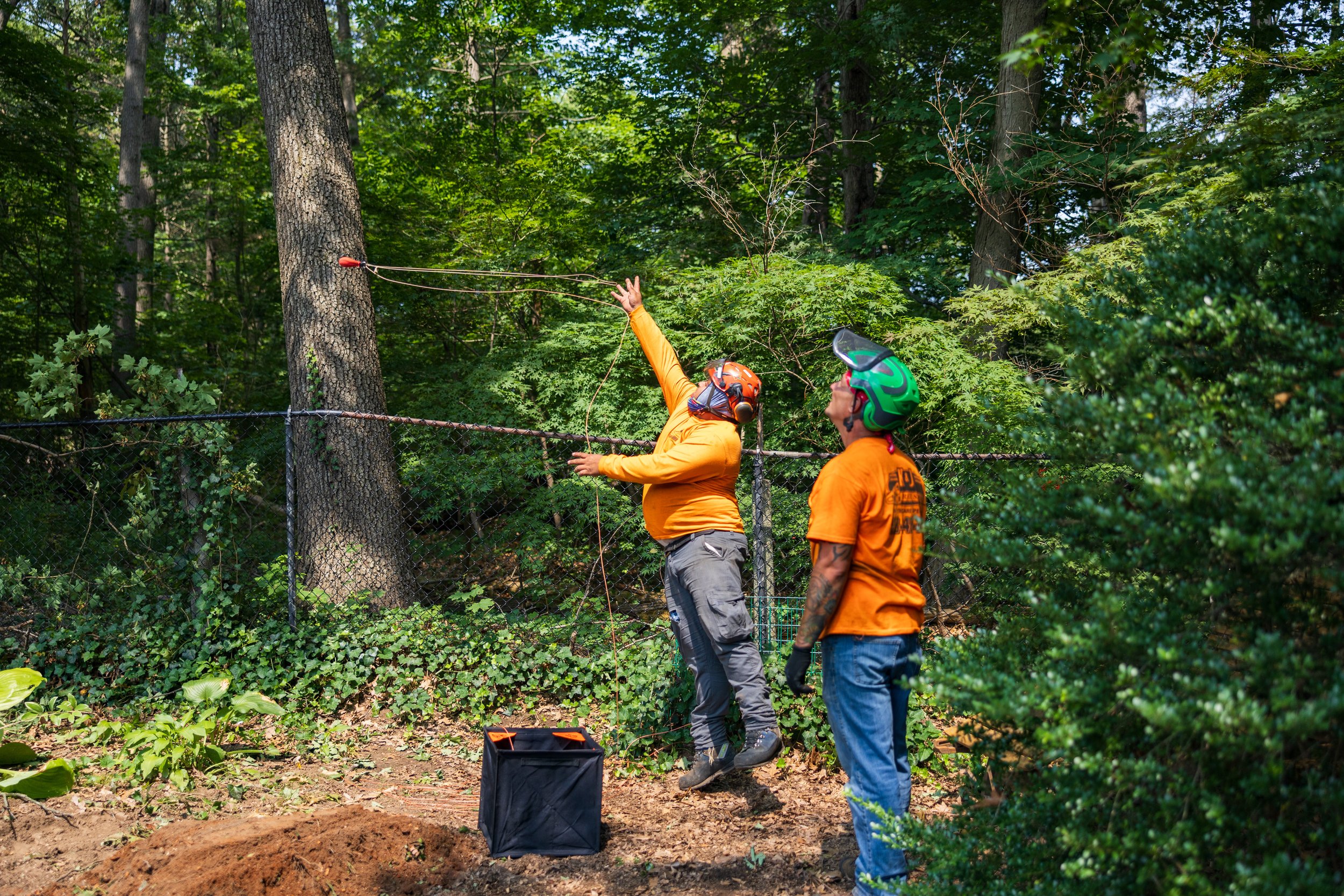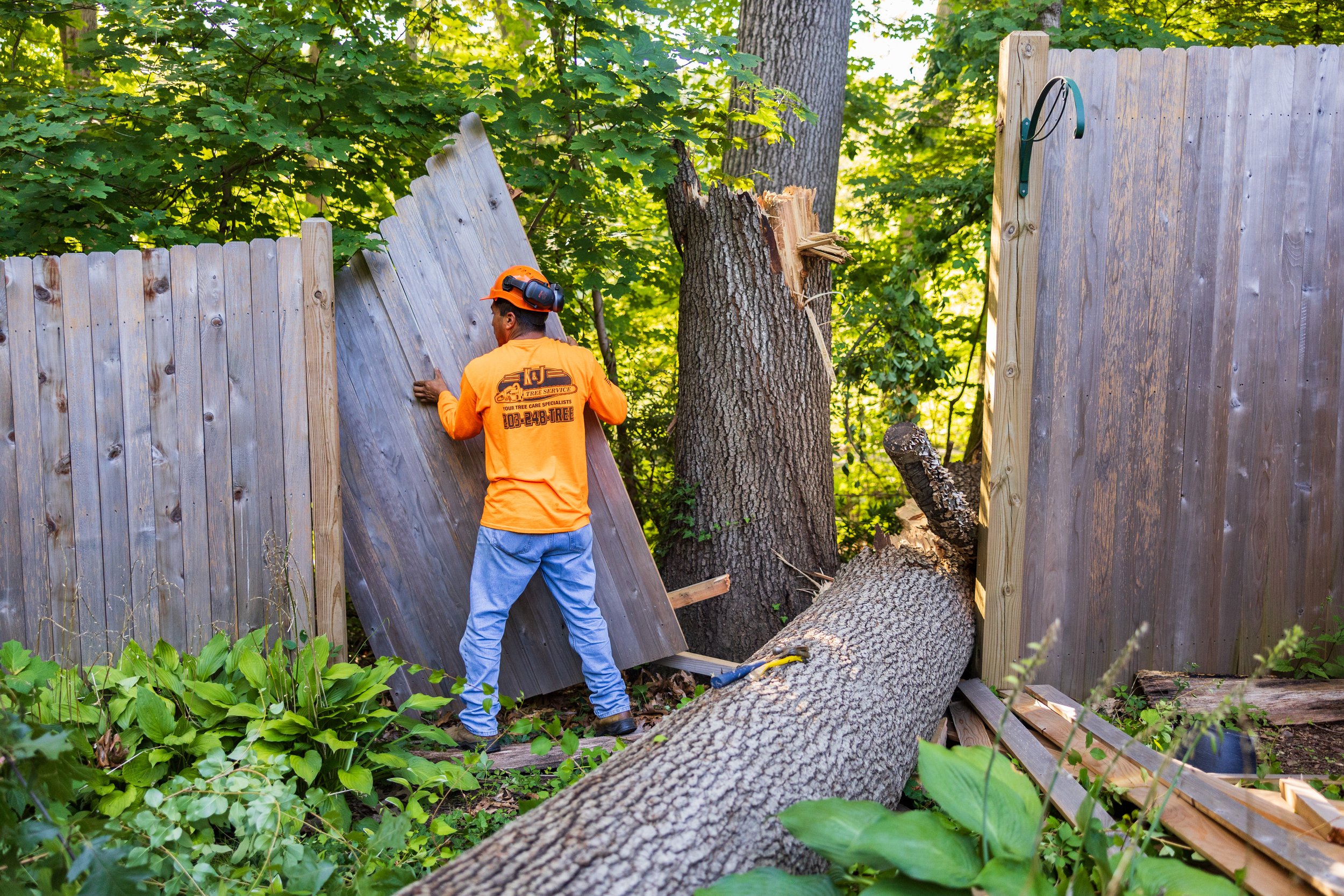Cutting Trees on Property Lines: Connecticut Law
What can you legally do to remove a tree on the property line of you and your neighbor’s yard? And what about pruning a tree rooted in your neighbor’s yard but hanging over your property? When trees and their limbs cross over property lines, it can be challenging to navigate the law – that’s why we are here to help.
My neighbor’s tree is hanging over my yard. What can I do?
Under Connecticut case law, as a homeowner, you can legally cut the branches off a tree growing on your neighbor’s property if they are encroaching onto your property. However, you can only cut up to the property line, and you cannot disregard the tree's health. At K&J Tree Service, all our pruning cuts must comply with the American National Standards Institute’s (ANSI) A300 Tree Care standards.
These standards state that we cannot remove more than 25% of the foliage of a tree within an annual growing season, as this may cause irreversible damage. And, if cutting a branch to the property line would result in leaving behind a short nub, we cannot proceed with this work, as this can harm the tree. In this situation, the homeowner needs their neighbor’s permission to have a tree service company go onto their property and cut a branch that crosses over the property line. This is a common scenario that can lead to neighbor disputes. To help mitigate these situations, we recommend scheduling a free tree risk assessment with a Connecticut-licensed arborist. This professional can evaluate the tree in question and explain all your legal options to help you determine the best course of action.
I have a tree in the middle of the property line. Can I remove it?
If a tree is in the middle of you and your neighbor’s property line, the tree is co-owned. This means that decisions regarding the pruning or removal of the tree must be made in collaboration with your neighbor – otherwise, you’re putting yourself at risk of a lawsuit.
If my neighbor’s tree falls on my property, who is responsible?
Suppose your neighbor’s tree falls on your property during a storm, causing damage to your yard and house. In most cases, this is considered an “Act of God,” and you are legally responsible for the cleanup and filing a claim with your insurance company for damages. In some situations, though rare, your neighbor could be liable for the damage if they were negligent by knowing about structural issues with the tree and intentionally not taking action to remediate the situation.
Contact K&J Tree Service Today
Do you need help understanding your legal rights to remove or prune a tree on property lines? Contact K&J Tree Service to schedule a free tree risk assessment with one of our Connecticut-licensed arborists. All our work complies with the American National Standards Institute’s (ANSI) A300 Tree Care standards, which are considered the highest standards for industry practices. Let our team help you navigate these situations, answer your questions, and provide a recommended action plan.




